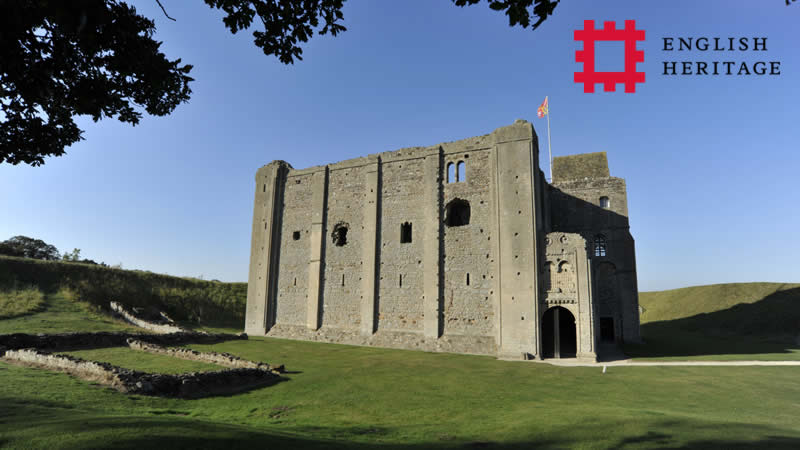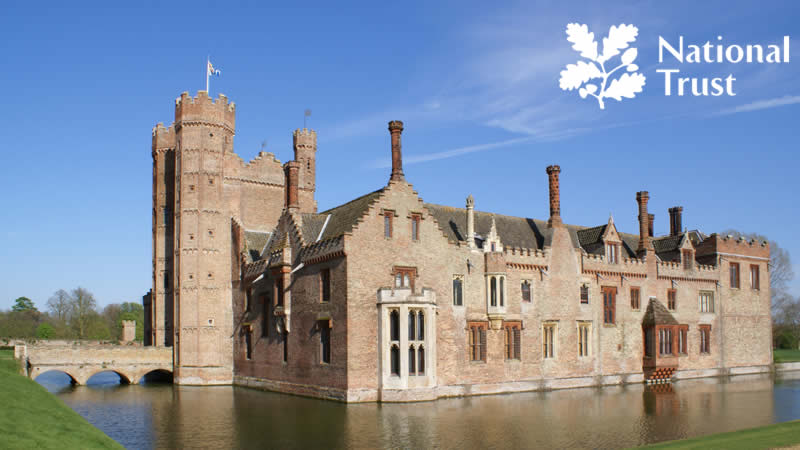Strangers' Hall
Published date: April 2020

This magnificent Tudor house is one of Norwich’s most historic buildings and has been home to many of the city’s wealthy and influential citizens since the 14th century. Located a short walk from Norwich Market and main shopping area, Strangers’ Hall is today a museum of local history.
The undercroft at Strangers’ Hall is thought to date from around the 1320s when Ralph de Middelton owned a house on this site, and it would have been used to securely store, and possibly display, goods for sale. The house was seen as a prestigious dwelling and many mayors and merchants made their personal mark on the building by remodelling and extending it to reflect both their status and wealth. It is thought that the Great Hall was built during the 15th century, when William Barley, a cloth merchant lived here. Norwich grocer and mayor, Thomas Sotherton owned the house during the 16th century, and it is as a result of his entrepreneurism that the house became known as Strangers’ Hall.
The first ‘strangers’ were Flemish, Dutch and Walloon refugee weavers who fled the low countries in the 16th century due to persecution under their Spanish (Catholic) rulers. Under Elizabeth I, England was a Protestant country and welcomed the refugees. Thomas Sotherton encouraged these skilled textile weavers to settle in Norwich because he could see the economic value of having them here. Records show that some may have lodged at Strangers’ Hall and much of the prosperity of Norfolk after this period can be traced to this influx of refugees. The Sotherton family made many improvements to the house, including the installation of the crown post roof, stone-mullioned bay window, front door and vaulted porch.
Grocer Francis Cock installed the Walnut Room, magnificent staircase and the window that lights it in 1627, the same year that he became Mayor of Norwich. The Great Chamber was originally in a separate wing from the Great Hall but is now displayed as the private chamber of Sir Joseph Paine, a wealthy city hosier who lived at Strangers’ Hall between 1659 and 1667. Paine was mayor when Norwich declared its support for the restoration of Charles II and in 1660 he went to London to present the newly-restored King with one thousand pounds in gold from the citizens of Norwich and was rewarded with a knighthood.
In 1748 Strangers’ Hall became the official lodging of the assize judges who would visit the city regularly to hear court cases. The Georgian dining room was installed for them, designed in the latest style with deep sash windows, decorated over-mantel and plaster ceiling and painted wall panelling. By the 1890s Strangers’ Hall stood empty, it became neglected and derelict. Local solicitor Leonard Bolingbroke bought the building in 1899, saving it from demolition and he furnished the house with his own antiques, being a keen collector. In May 1900, he opened it to the public as a folk museum – one of the first of its kind in Britain and in 1922 presented the museum and its contents to the City of Norwich.
The Great Hall was the heart of this medieval and Tudor home, it was a communal space used for everyday activities and hosting ceremonies and events. Wealthy and influential owners of Strangers’ Hall would entertain lavishly and demonstrate their wealth by using fine tableware including plates, linens, glassware and pewter. From the Great Hall a door leads to the beautiful garden, which is maintained by the Friends of the Norwich Museums. Here you will find a small ‘knot garden’, a formal, symmetrical, geometric design that is best viewed from the top windows of the house. There are beds of old-fashioned roses and a selection of plants that have culinary, medicinal and textile-related uses.
Lady Paine’s Bedchamber is in an upper level extension to the Great Hall and was remodelled for a wealthy Norwich hosier, Sir Joseph Paine and his wife Lady Emma. Bedchambers were used during the day for entertaining guests, reading and sewing. The furniture in this room is original, with replica textiles and personal and household objects to show how the room may have looked in the mid-17th century.
The Great Chamber is set out as the private chamber of one of the house’s most famous residents, Sir Joseph Paine. Paine was a royalist supporter at a time when the majority of the City Assembly supported the Parliamentarian cause, and this led to a spell out of office when he was imprisoned. With the fall of the Protectorate he was restored to power and seized his moment to make an impression with the monarchy. He travelled to London with £1,000 from his fellow citizens to show his support for King Charles II. Paine was subsequently knighted and spent the next years restoring order and prosperity to Norwich. Much of the furniture in this room is original, mainly made of walnut and oak, with flamboyant carved decoration. Most of the smaller objects are replicas and have been carefully chosen to demonstrate the types of possessions a man such as Sir Joseph Paine would have had in the 1660s. This room is the best room in the house to view the 17th century-style knot garden.
The Little Bedchamber has been remodelled over the centuries and no one is exactly sure how it would have been used, maybe it was a dressing room or a servants’ bedchamber? From the window you can see St Gregory’s Church, where many former residents of Strangers’ Hall are buried.
The Georgian Dining Room was built in the Tudor period but was redesigned in the latest style when Strangers’ Hall became the official lodging house for the assize judges in 1748. There is a stunning chandelier that dates from around the late 1700s. A lot of the furniture is made of mahogany, which became the height of fashion in the Georgian period and was available in Britain from the 1720s. They feature delicate carvings and the dining chairs are based on Thomas Chippendale’s designs, with wide seats to accommodate the wide skirts of fashionable ladies.
It is thought that the Parlour was probably added to Strangers’ Hall by Thomas Cawse in the late 15th century, when smaller, more intimate family rooms were desired. The room is arranged to suggest a christening celebration to mark the baptism of a former resident of Strangers’ Hall, William Bosely, on 1 March 1796. A doll representing William is in the oak cradle, wearing infant linens replicated from examples in the Norfolk Museums Service collections. Traditionally the cradle was placed near to a fire, so that the light would reveal anything wicked approaching the child. It was also common for a piece of iron or some salt to be hidden in the cradle as they believed this would ward off evil spirits.
The Sotherton Room contains furniture mainly from the 17th century, with most of the cooking equipment being produced much later, from around the early 19th century. There are a number of interesting features including a chimney crane used to change the height of the cooking pot over the fire, a Dutch oven which was placed in front of the fire and reflected heat onto the meat hung inside it, and a clockwork bottle-jack, a device that kept meat turning while it roasted. The replica food is what would have been familiar to Mayor of Norwich Nicholas Sotherton, who resided at Strangers’ Hall.
The Victorian rooms consist of the nursery, dining room and parlour. The nursery was often situated at the top of the house, so that the children could not be heard, and the nursemaid would spend most of her time washing, dressing and undressing the children. On all but the hottest of days the coal fire would be kept alight, as the guard would be used for airing the children’s clothing. The nursery at Stranger’s Hall demonstrates the Victorian concerns for health, cleanliness, godliness and self-improvement and offers a fascinating insight into what life was like for more privileged infants during this time. View the water can which servants used to bring hot water up from the kitchen, the metal cot, the lavatory in its mahogany case and the tall backed correction chair designed by Sir Astley Cooper specifically to straighten a child’s back. Noah’s Ark taught children about the Bible and in some households, these were the only toys permitted on a Sunday. The doll in this room was an ornament rather than a plaything and Victorian ladies would spend many hours creating miniature books, jewellery and clothes to decorate them.
Most of the Victorian dining room’s furnishings date from the second half of the 19th century and this room would have been the focal point of family entertaining. Well-to-do Victorians would dine on many different courses, each requiring a different set of cutlery. The decoration of the table was considered to be almost as important as the food itself and the table setting in this room although grand, would have been within reach of most middle-class families, being modestly priced silver-plated wares. The embroidered bell-pull was an essential item of equipment for this period, as middle-class families would have probably employed a cook, housemaid and possibly a nursemaid. It was only the very rich who could afford male servants during Victorian times.
The Victorian parlour was the heart of the Victorian home and was presided over by the mistress of the house. From here she would manage the household, entertain close guests and gather the family together in the evenings, often around the piano, where they would play and sing. It may look cluttered, but all the furniture, ornaments and pictures were used to showcase the owner’s wealth and taste. There are many examples of Victorian fashions and crafts in this room, including Berlin woolwork, a bowl of life-like fruit made from wax and glass shades to protect particularly prized ornaments such as the delightful bouquet of flowers made from shells.
The Walnut Room was added to the house by Mayor Francis Cock in the 17th century and these upper rooms provided privacy for family members and a place to display their finest possessions. Wealthy people began investing in specialist furniture rather than traditional types made of oak and walnut became popular. Furniture made from walnut was much more expensive and scarce as although walnut trees were being grown in England by the 17th century it was not in sufficient quantities to keep up with the demand. Walnut was either imported from France or Virginia and pieces of furniture were often veneered with thin slices of walnut stuck onto cheaper wood.
Strangers’ Hall offers a variety of venue hire options across many of its most popular spaces. From the regency opulence of the Georgian Dining Room to the intimate grandeur of the Tudor Great Hall, the Medieval Undercroft and Elizabethan knot garden. There is also a marquee available for hire. Weddings at Strangers’ Hall offer the perfect city centre location without the city centre hustle and bustle.
To find out more about Strangers’ Hall, including opening times, admission costs and venue hire, please visit their website.
Strangers’ Hall, Charing Cross, Norwich, Norfolk, NR2 4AL

Norfolk Wedding Venues

Some of the most popular Parkruns in Norfolk

Celebrate Bonfire Night with these Firework Displays in Norfolk

Rainy Day Fun in Norfolk

North Norfolk Railway

Arts and Crafts in Norfolk

Things to do in King's Lynn

Breckland Leisure Centre and Waterworld

Christmas Lights Switch-On Events Across Norfolk in 2019

Norfolk Bread Pudding Recipe
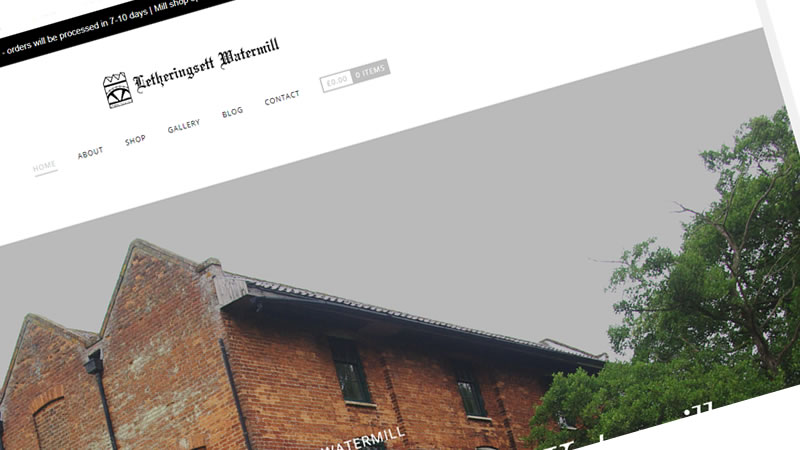
Letheringsett Watermill
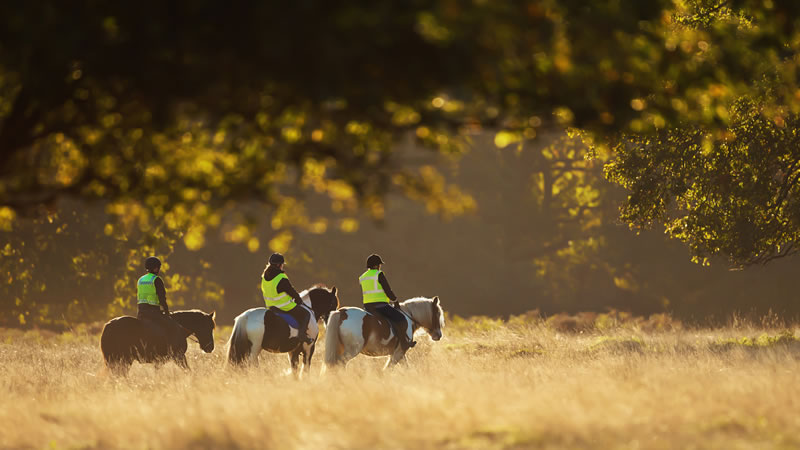
Horse Riding and Horse Riding Holidays in Norfolk

Some of the best places to go for a carvery in Norfolk
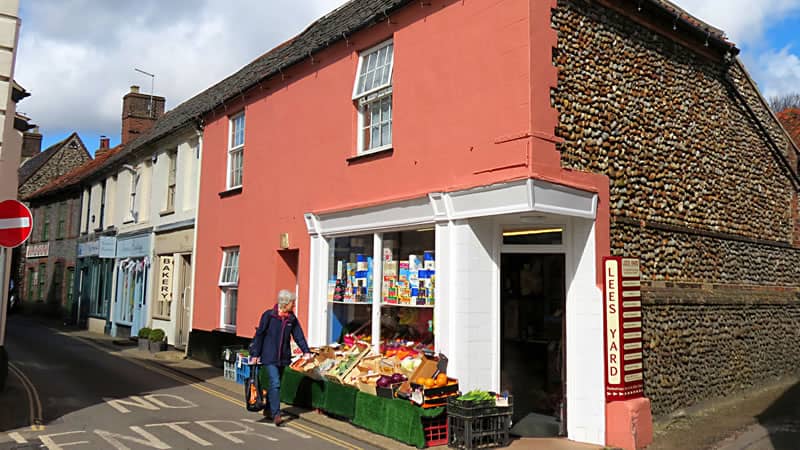
14 reasons to visit Holt, Norfolk


